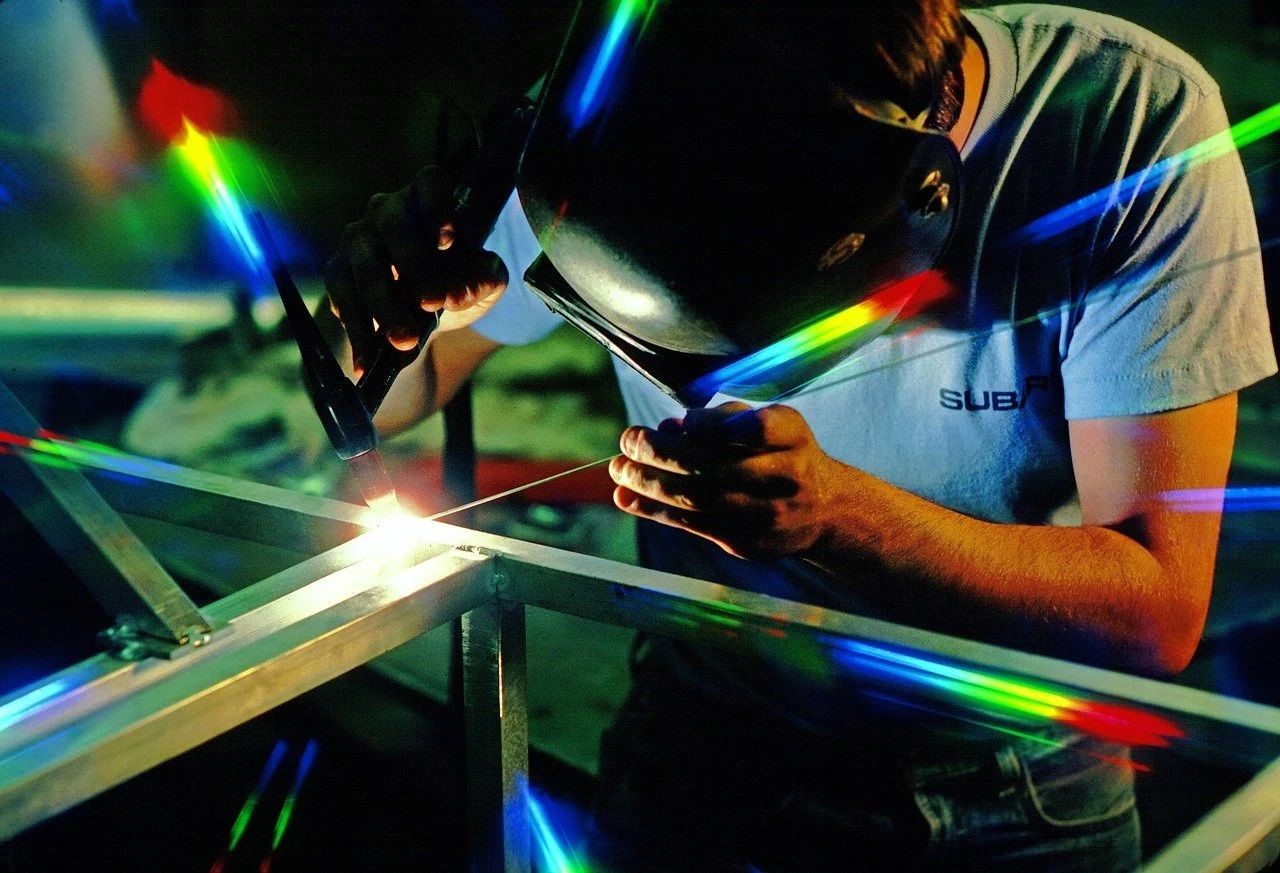(1) Weldability of steel and aluminum and its alloys
Iron, manganese, chromium, nickel and other elements in steel can mix with aluminum in liquid state to form limited solid solution, and also form intermetallic compounds. Carbon in steel can also form compounds with aluminum, but they are almost incompatible with each other in solid state. dissolve. Between different contents of aluminum and iron, a variety of brittle intermetallic compounds can be formed, among which FeAls is the most brittle.
It has a significant impact on the mechanical properties of the welded joints of steel and aluminum, including microhardness. In addition, since the thermophysical properties of steel, aluminum and their alloys are also very different, the weldability of steel and aluminum is deteriorated.
(2) Welding process of steel and aluminum and its alloys
From the above-mentioned analysis of steel-aluminum weldability, it is almost impossible to reduce the reduction of steel and aluminum and its alloys by direct fusion welding.
It is almost impossible to use a metal or alloy whose thermal physical properties are between steel and aluminum and which can be metallurgically compatible with the two as a filler metal for direct welding.
In production practice, there are two methods: coating layer indirect fusion welding and intermediate transition piece indirect fusion welding.
1) Coating layer indirect welding method Before steel and aluminum are welded, one or several layers of metal that can be metallurgically fused with an appropriate filler metal are pre-coated on the surface of the steel to form a pre-coating layer, and then used Gas tungsten arc welding method A method of welding coated steel to aluminum.
Proved by practice and test:
A single coating layer can only prevent the oxidation of the base metal, but cannot prevent the generation of intermetallic compounds, and its joint strength is still very low. Therefore, argon arc welding of steel and aluminum should be carried out with composite coating.
There are many metal materials for coating, such as Ni, Cu, Ag, Sn, Zn and so on. The coating metal material is different, and the result after welding is also different. Cracks are easy to form on Ni, Cu, Ag composite coating; Ni, Cu, Sn composite coating is better; Ni, Zn composite coating has the best effect.
The argon arc welding of composite coated carbon steel and aluminum and its alloys is to first coat a layer of metal such as copper or silver on the steel side, and then coat a layer of zinc. When welding, zinc melts first (because the melting point of welding wire is higher than that of zinc), and floats on the liquid surface.
The aluminum reacts with the copper or silver plating under the zinc layer, and at the same time the copper and or silver dissolves in the aluminum, which can form a better welded joint. It can increase the strength of steel-aluminum welded joints to 197~213MPa.
After the steel parts are coated, the surface of steel and aluminum can be treated. The surface treatment of aluminum parts is eroded with 15%~20% NaOH or KOH solution to remove the oxide film, rinsed with clean water, then passivated in 20% HNO3, rinsed, and ready to dry Perform argon arc welding.
Welding materials – choose pure aluminum welding wire with less silicon content, so that high-quality joints can be obtained. It is not suitable to use magnesium-containing welding wire (LFS), because it will strongly promote the growth of intermetallic compounds and cannot guarantee the strength of the weld joint.
Welding method – the relative position of workpiece, welding wire and tungsten electrode during welding.
In order to prevent premature burning of the steel surface coating, when welding the first weld, the welding arc should always be kept on the filler metal; for subsequent welds, the arc should be kept on the filler wire and the formed weld, so that It can avoid the arc directly acting on the coating.
In addition, the arc moves along the surface of the aluminum side and the aluminum welding wire moves along the steel side, so that the liquid aluminum flows to the groove surface of the composite coated steel, and the coating can not be burned prematurely and lose its effect.
Welding specification – the argon arc welding of steel and aluminum uses AC power, one is to hit the oxide film and break it, and it can also remove the oxide film on the surface of the molten pool, so that the molten weld metal can be well fused.
The welding current is selected according to the thickness of the weldment. Generally, when the plate thickness is 3mm, the welding current is 110-130A; when the plate thickness is 6-8mm, the welding current is 130-160A;
2) Indirect fusion welding method for intermediate transition pieces. This welding method is to put a prefabricated steel-aluminum composite panel in the middle of the steel-aluminum joint to form their own joints, that is, steel-steel and aluminum-aluminum joints. Then use the conventional fusion welding method to weld the same metal at both ends respectively.
When welding, pay attention to welding aluminum joints with large shrinkage and easy thermal cracking first, and then welding steel joints.
Post time: Mar-22-2023




